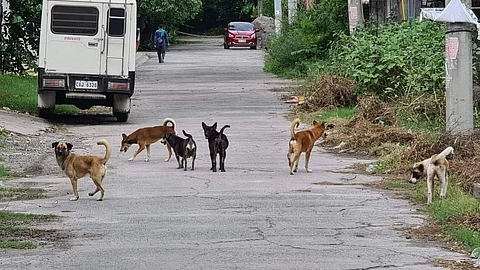

The Department of Health (DOH) considers it a “neglected” disease: 100-percent fatal and yet 100-percent preventable.
While neither a leading cause for mortality and morbidity in the country, rabies kills approximately 200-300 persons every year since 2007.
The DOH targeted making the Philippines rabies-free by 2022.
The elimination of this “acutely fatal infection” usually resulting from a “subdermal bite or scratch from an infected animal” requires better efforts from public and private stakeholders.
The DOH’s Epidemiology Bureau monitored 55 cases/deaths due to rabies during the first two months of 2023, reflecting an eight-percent increase over cases/deaths monitored for the same period in 2022.
Prevention is key to stemming the incidence of and fatalities caused by rabies. The Philippines’ campaign against rabies emphasizes management of rabies rather than prevention through mass vaccination of pets and stray animals, such as dogs and cats.
The World Health Organization (WHO) states that 99 percent of rabies cases globally results from dog bites.
Immunization programs for domestic and feral animals need to be institutionalized by line agencies, local governments and civil society. This was pointed out by a doctor of the San Lazaro Hospital in Manila, which is a major referral facility for infectious diseases and tropical medicine.
Published in the “PLOS Neglected Tropical Diseases” scientific journal, the study tracked San Lazaro Hospital’s management of about 60-80 rabies cases annually from 2006 to 2015.
Mass vaccination of dogs and cats in all regions needs to be initiated by the government, with civil society linkages and support.
Socially responsible individuals ensure that their pets have complete and updated vaccinations, as well as take measures to keep dogs and cats on leash when they are walked in public places.
However, there are many irresponsible pet owners who let their unleashed pets roam in public. Not only do they shirk the annual vaccinations required for the health of their dogs and cats, they also do not spay or neuter the animals, resulting in litters that are unwanted and abandoned.
Abandoned animals that live on streets turn feral and may become aggressive towards humans as a result of repeated mistreatment. Bites and scratches from abandoned, ownerless dogs and cats present problems for victims, given the difficulty of attaching accountability for biting and scratching accidents.
Category I of contact requires 10 minutes of careful washing with water and soap the areas exposed to possibly infected animals. There is no penetration of the skin.
However, immediate vaccination is required along with wound washing for categories II and III of contact. In the second category, there are minor scratches or abrasions. In the third category, there are multiple, severe bites or scratches, exposing the mucous membrane or broken skin to the saliva of the possibly rabid animal.
Chelo was repeatedly bitten by her pet cat when she rescued this from being attacked by her dogs. She sought emergency services at the nearest animal bite treatment center (ABTC), a private hospital, where she received four doses of Tetanus Toxoid, Tetanus Immunoglobulin, Rabies Immunoglobulin and Anti-rabies Vaccine for Category III exposure.
She needed three more doses of Anti-rabies Vaccine and two more doses of Tetanus Toxoid. Seeking to spend less or avail herself of free vaccines, Chelo approached the ABTC of the city health center.
However, the vaccine brand initially used was not available at the local government’s ABTC, forcing Chelo to return to the private hospital for a continuation of her anti-rabies and anti-tetanus treatments.
Given the expense of treating rabies cases, particularly in categories II and III, prevention through mass animal vaccination is logically the more pragmatic, efficient approach to fight and wipe out rabies in the Philippines.